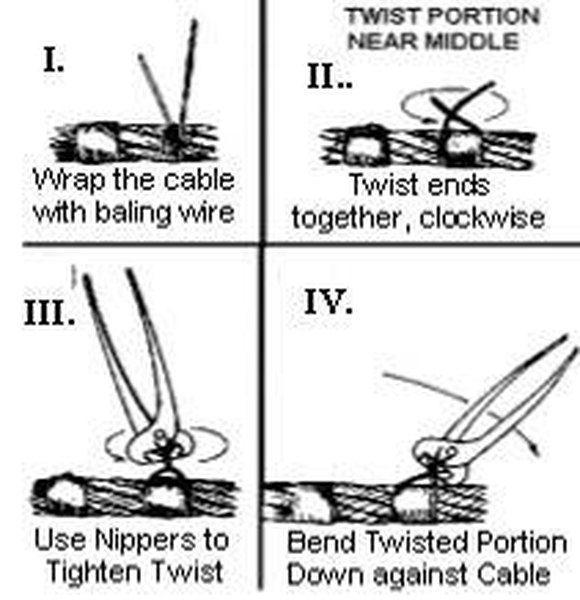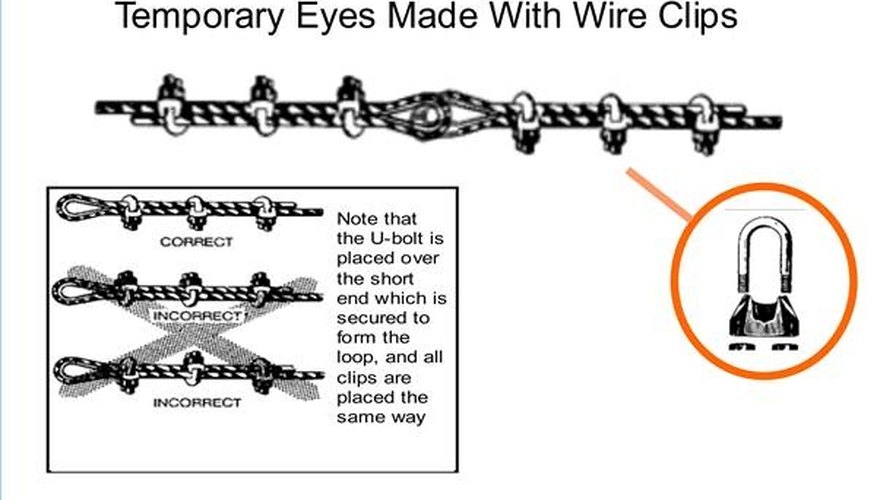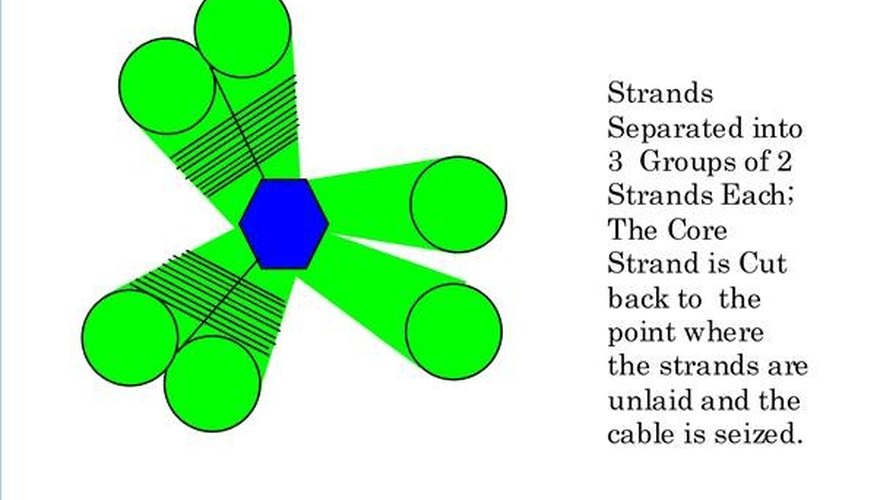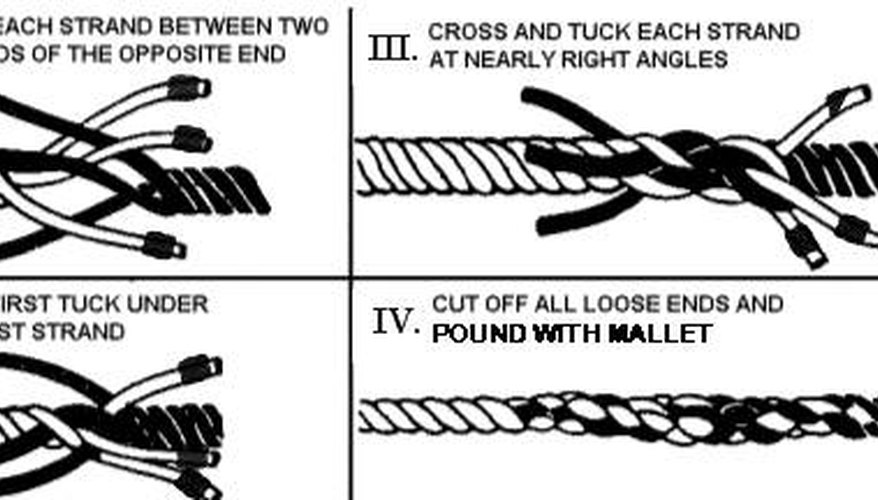The winch cable on your boat may look more intimidating than your nylon dock lines or rigging, but your winch cable is nothing more than wire rope; the only difference between that winch cable and the nylon line you use to tie your boat to the dock is that the wire rope is made up of six strands rather than three. If your winch cable parts, two temporary interlocking eyes make temporary repairs on the spot. Permanent repairs are made with a short splice and can save time and money during boating season.
Items you will need
Baling wire (for seizing)
Marlinspike (steel, not a wooden fid)
Bolt cutter or hydraulic wire rope cutter
Farrier's pincers, also called wire nippers
Rigger's vise or bench vise
Cold chisel
Mallet
Leather gloves (welder's gloves are ideal)
Safety glasses
Wire brush
Heavy lithium grease

Seize the ends of cable
"Seize" the ends of both parts of the broken cable by wrapping baling wire around the cable at a point where the wire is still good, but as close to the damaged ends as possible. Use the bolt cutter to cut the damaged ends from the cable.

Making a temporary repair
Make a temporary repair by using wire rope clips to "turn" two interlocking eyes into the parted and seized ends of the cable. The eyes will not reel onto the winch drum correctly but will keep to the cable together and bear 70 percent of the safe working load that the cable is capable of bearing.
Make a permanent repair by making a short splice in the cable. This process is slightly different than making a short splice in fiber rope, only because the cable is made up of six strands, where the fiber rope is three-strand line, and the cable has a core. Unlay one end of each part of the cable five complete turns and seize each strand with baling wire.

Seize strands together to (temporarily) make the six-strand cable a three-strand line.
Seize each two adjacent strands together at the ends to form three "super strands" around the core. Cut the core back on each part to the point where all six strands strands are seized together.

The short splice in four steps
Make a standard short splice to join the ends of the cable together, using a bench vise or a rigger's vise to hold the cable together during the process. Since a part of the core was removed from the cable, the safe working load will be about 80 percent of the safe working load prior to the time the cable parted.
Warnings
- Safety glasses and heavy work gloves are recommended during this process, since individual wires that spring loose routinely find their way into inconvenient unprotected places.
Tips
- The only real maintenance for a cable is lubrication with grease and cleaning the rust off it: a thin coating of lithium grease can be applied with a paint brush or rag, and rust can be removed with a wire brush.
References
Tips
- The only real maintenance for a cable is lubrication with grease and cleaning the rust off it: a thin coating of lithium grease can be applied with a paint brush or rag, and rust can be removed with a wire brush.
Warnings
- Safety glasses and heavy work gloves are recommended during this process, since individual wires that spring loose routinely find their way into inconvenient unprotected places.
Writer Bio
Will Charpentier is a writer who specializes in boating and maritime subjects. A retired ship captain, Charpentier holds a doctorate in applied ocean science and engineering. He is also a certified marine technician and the author of a popular text on writing local history.



